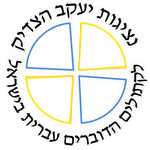Ziv: Parashat Mattot-Masa’i
Each week, Gad Barnea or Sister Agnès de la Croix (from the Community of the Beatitudes) proposes a reflection on the portion of the Pentateuch that is read in the synagogue (parashat hashavua). This week the portion is from Numbers 30:2 - 36:13 with the haftarah (additional reading) from Jeremiah 2:4 - 28; 3:4. They call their reflection “ziv” – a ray of light.
![]()
Sanctuary cities
This week we read the last two parashot of the book of Numbers. This is the end of the journeys of the Hebrews in the wilderness and the end of the life of Moses. The thirtieth chapter tells us of the importance of the given word, of vows and utterances. Then the order is given to Moses to go to war against the Midianites, a war of vengeance… against those who have tried to turn the people of the living God and push them to commit idolatry. And, the text tells us, “they also killed Balaam son of Beor with the sword” (31:8). A commentary says that Balaam stayed behind to see whether his plot to destroy the people would succeed. He had tried at first to use the power of the word to curse the Israelites, then, seeing that he has blessed them in spite of himself, he incited them to commit whoredom. But, it was given to Israel to know the power of the word, and its efficiency, as we have seen in chapter thirty. The sword, is the weapon of Esau [“By your sword you shall live” (Gen 27:40)], and Balaam, who tried to use this weapon against Israel, would die by the sword. Moses would not participate in the war of vengeance, possibly because in his youth, he found refuge with the Midianites.
At the end of the parasha, at the moment of the distribution of the land to the different tribes, there is the issue of the sanctuary cities. This is a totally new concept in Biblical history: there needs to be a place to where those who have killed without premeditation, but by accident, would be able to escape blood vengeance. These cities are a way to break the cycle of vengeance. The murderer cannot go out of the city without exposing himself to vengeance, and so, in some way “pays” for his crime. The relatives of the one who was killed can also find some relief in this arrangement: they accept not to seek vengeance as long as the accused remains in the city. The murderer can, however, return to his heritage upon the death of the high priest. The theme of blood vengeance is tied to that of the land: spilling blood, taking a life means to defile the land (35:33). Divine Presence cannot reside in a land polluted by blood. Just as one has to be purified before entering the temple, because it is a holy place, so do the inhabitants of the land have to be pure of spilled blood. The high-priest is the one who, on the day of Kippur, offers up the sacrifice of atonement - it is his role to achieve pardon for the sins of the people. It is for this reason that his death marks the end of the exile of those who have found refuge in the sanctuary cities. Shabbat Shalom.












 Reflecting on Purim and on Lent
Reflecting on Purim and on Lent Rosh HaShana – the Feast of God the Father
Rosh HaShana – the Feast of God the Father Four Words For the Easter Season
Four Words For the Easter Season Ash Wednesday of T. S. Elliot
Ash Wednesday of T. S. Elliot Holy Wednesday
Holy Wednesday Epiphany – the light will conquer the darkness
Epiphany – the light will conquer the darkness